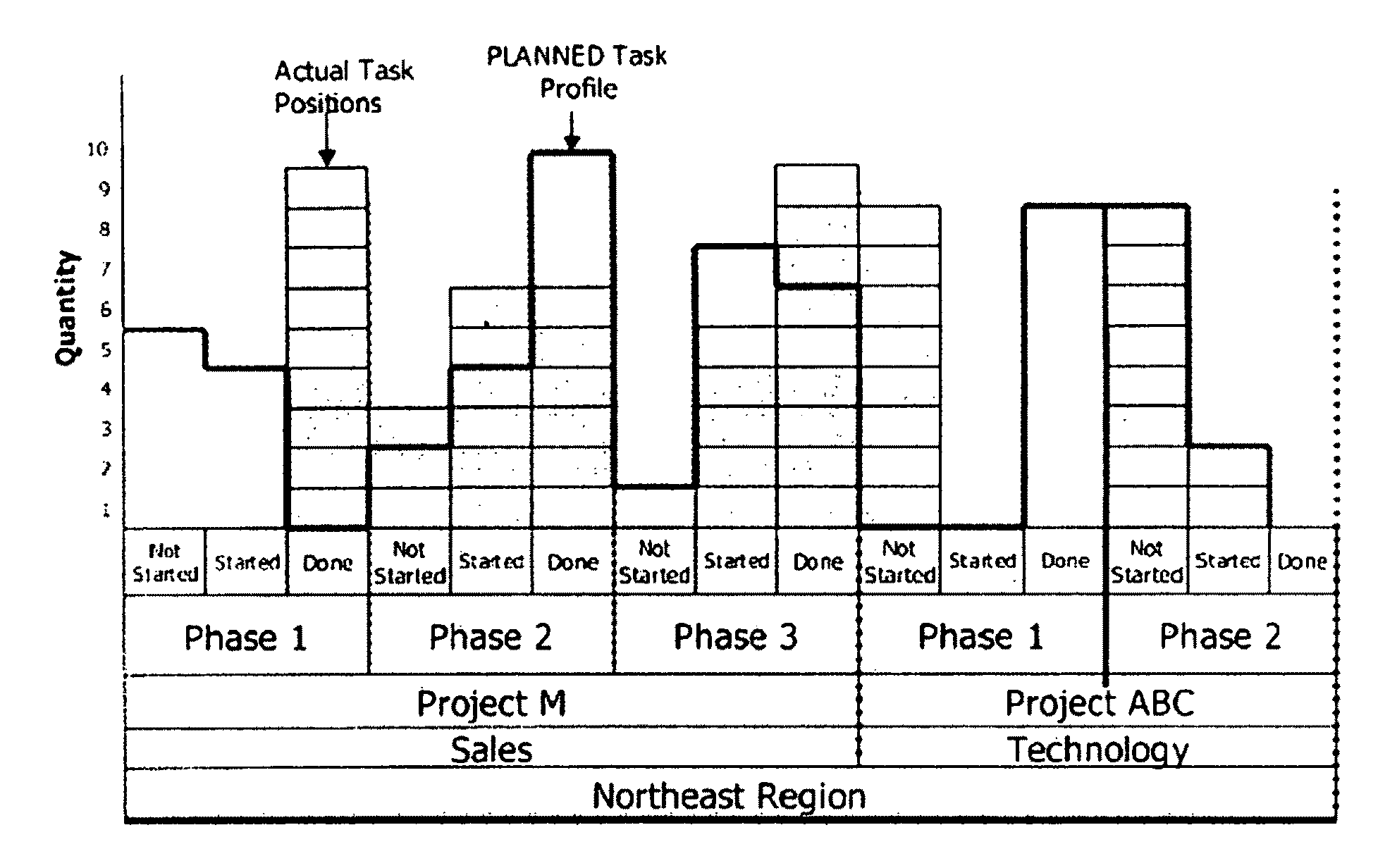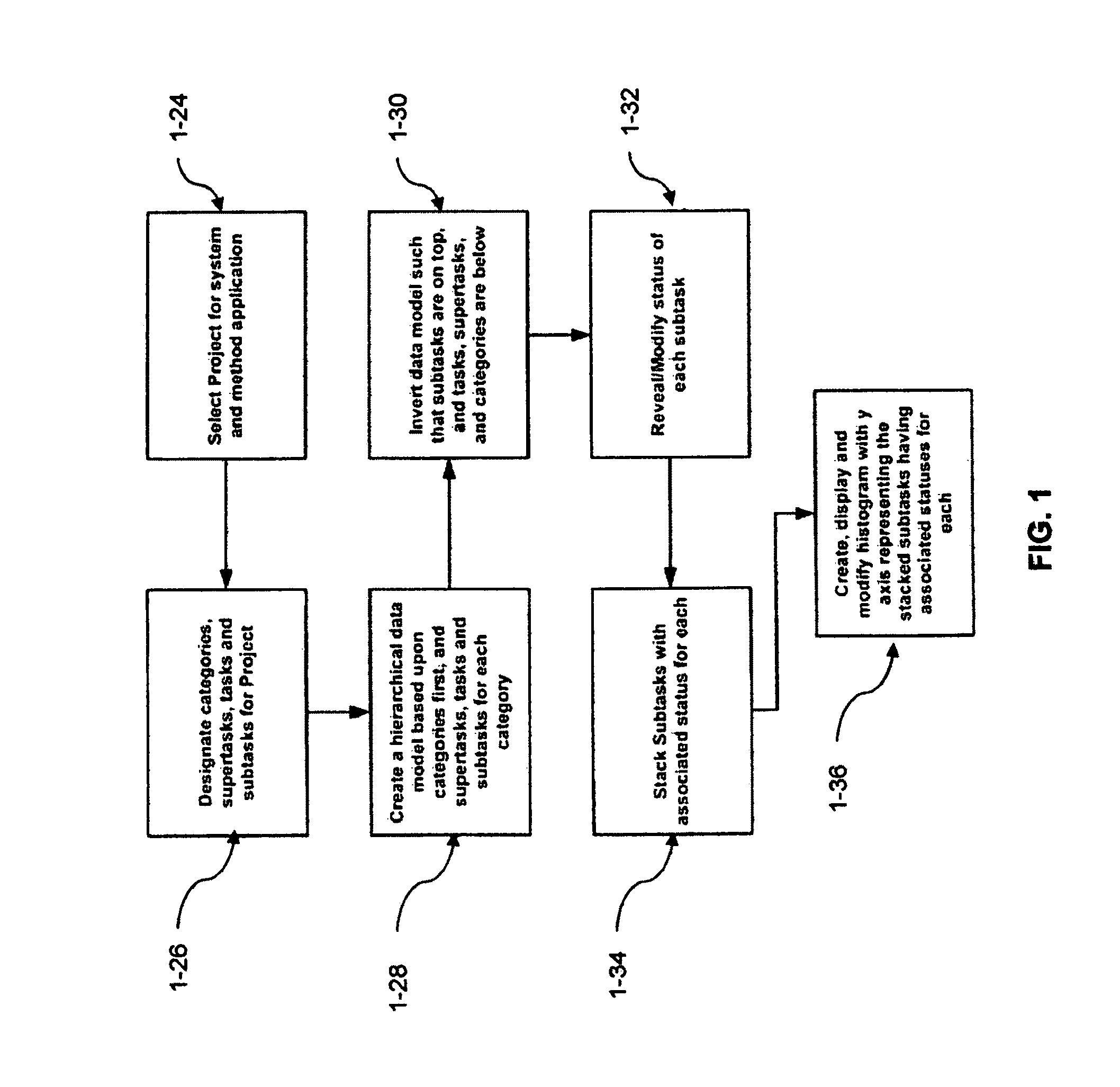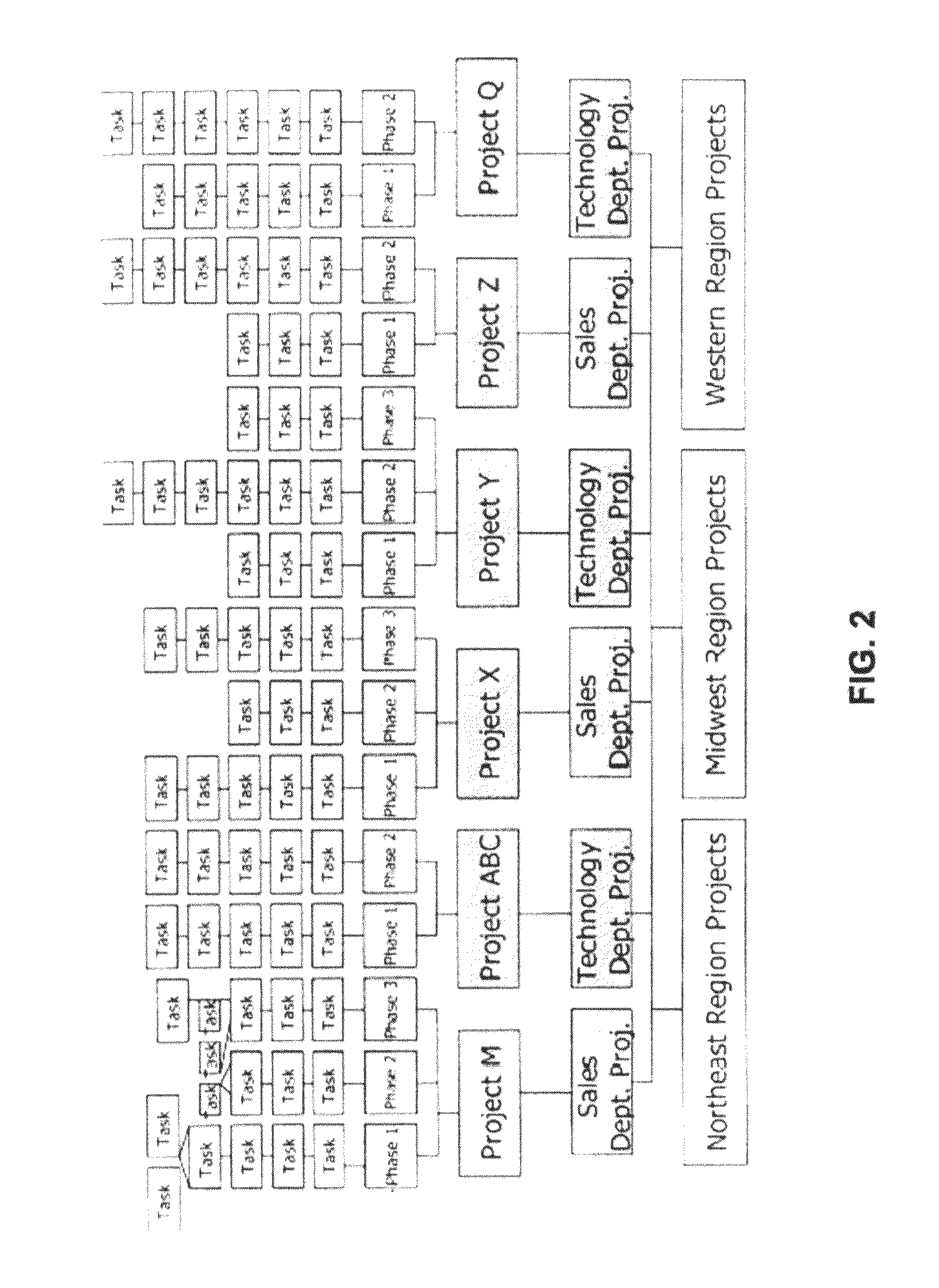System and method for promoting action on visualized changes to information
a technology of information and visualization, applied in the field of system and method, can solve the problems of increasing complexity of business processes, increasing complexity of complex data management, and increasing burden on data organization, and achieve the effect of maximizing the available plotting area
- Summary
- Abstract
- Description
- Claims
- Application Information
AI Technical Summary
Benefits of technology
Problems solved by technology
Method used
Image
Examples
second embodiment
[0144]FIG. 11 is a display on a computer monitor in graph configuration form of a second embodiment provided when carrying out the method of the present invention by a computer program which executes a method of the present invention.
[0145]In this graph configuration, the program expresses two categories, namely category 1 and category 2 which are aligned in a horizontal row.
[0146]Stacked below category 1 is subcategory 1 whose width is identical to the width of category 1.
[0147]Stacked below subcategory 1 of category 1 is a plurality of data cells namely a, b, c and d, which are aligned and stacked below subcategory 1 of category 1 and whose width is identical to the width of category 1.
[0148]Stacked below the plurality of data cells in subcategory 1 of category 1 namely a, b, c and d, is another subcategory, namely subcategory 2 11-1 of category 1 which also has stacked below it data cells namely e and f, which are aligned and stacked below subcategory 2 of category 1 and whose wi...
third embodiment
[0155]FIG. 12 is a display on a computer monitor in graph configuration form of a third embodiment provided when carrying out the method of the present invention by a computer program which executes a method of the present invention.
[0156]In this graph configuration, the program expresses two categories, namely category 1 12-2 and category 2 which are aligned in a horizontal row.
[0157]Stacked below category 1 is subcategory 1 whose width one half of the width of category 1.
[0158]Stacked below subcategory 1 of category 1 is a plurality of data cells namely “a”, “b”, and “c”, which are aligned and stacked below subcategory 1 of category 1 and whose width is identical to the width of category 1. Here, the stack of subcategory 1 and the plurality of data cells “a”, “b”, “c”, and “d” is labeled 12-1. However the program specifies a maximum stacking height. Consequently data cell “d” has been automatically snaked over 12-1 to a position on the same horizontal level as subcategory 1 of cat...
fourth embodiment
[0164]FIG. 13 is a display on a computer monitor in graph configuration form of a fourth embodiment provided when carrying out the method of the present invention by a computer program which executes a method of the present invention.
[0165]In this graph configuration, the program expresses two categories, namely category 1 and category 2 which are aligned in a horizontal row.
[0166]Stacked below category 1 is subcategory 1 13-1 whose width the same width as category 1.
[0167]Stacked below subcategory 1 of category 1 is a plurality of data cells namely a and b which are aligned and stacked below subcategory 1 of category 1 and whose width is one half of the width of subcategory 1. However the program specifies a maximum stacking height. Consequently data cells c and d have been automatically snaked over 13-2 to a position on the same horizontal level as data cells “a” and “b”, respectively.
[0168]Stacked below data cells “b” and “d” is a new subcategory, namely subcategory 2 13-3 of cat...
PUM
 Login to View More
Login to View More Abstract
Description
Claims
Application Information
 Login to View More
Login to View More - R&D
- Intellectual Property
- Life Sciences
- Materials
- Tech Scout
- Unparalleled Data Quality
- Higher Quality Content
- 60% Fewer Hallucinations
Browse by: Latest US Patents, China's latest patents, Technical Efficacy Thesaurus, Application Domain, Technology Topic, Popular Technical Reports.
© 2025 PatSnap. All rights reserved.Legal|Privacy policy|Modern Slavery Act Transparency Statement|Sitemap|About US| Contact US: help@patsnap.com



